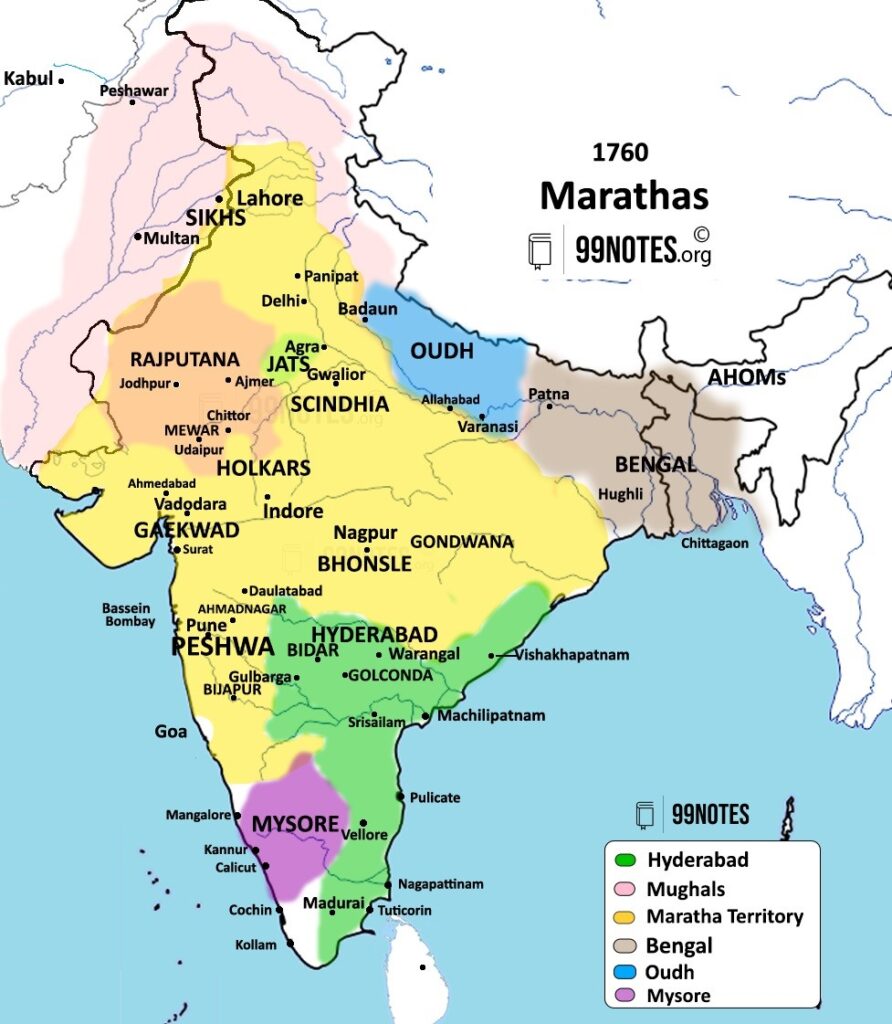The emergence of the Maratha state was one of the major developments of the 17th century as added a new chapter in the history of India. They were one of the strongest powers of their ages. It was the achievements of Shivaji which made the Marathas a major power in 17th century. Maratha state emerged as ray of hope in the political sense because with the decline of Mughal empire a vacuum created. But soon these hopes were faded away because Maratha also started to decline as a political power. There were number of factors behind the decline of Maratha state.
Also Read : Marathas Movement – The Rise
Marathas Movement – Nature and Character
Maratha State – Politico-Administration and Financial System
Factors Behind the Decline of Maratha State
The geographical isolation was the reason that pushes Marathas as forefront but this geographical isolation become a factor of decline for Maratha state because when Marathas moved in plains, they largely failed. The over-emphasis on the Maratha cultural identity did not allowed Marathas to join hands with other powers of India and hence, without the powers like Rajputs, the base of Maratha kingdom remain weak.

The scarcity of the resources in kingdom made Marathas to look for resources in neighbouring countries and hence, they started to attack them and started to collect Chauth (1/4th of their income) as charge to remain safe from Maratha’s attack. This thing damaged the image of Marathas and hence, the Rajputs and other native rulers did not support Marathas in the 3rd Battle of Panipat.
Marathas were specialized in the guerrilla warfare but when they came in northern plains, they did not have much experience of face-to-face battle of plains. This was the main reason behind the defeat of Marathas in the hands of Ahmad Shah Abdali in the 3rd Battle of Panipat of 1761. This defeat shattered the dream of Marathas of a pan-Indian empire. The politico-administration also was factor behind the decline of Marathas.
The feudal elements were centrifugal in nature as they dominated the peripheral regions of kingdom and hence, this impacted the unity of Maratha state negatively. The monarchial despotism was another important limitation of the Marathas state because a king of exceptional quality can only manage the heavy machinery of state. The transfer of polity into confederacy under Peshwas made the Marathas commanders to fight with each other, that eventually drained the strength of kingdom.
The economic condition wasn’t that good and hence, the scarcity of resources did not allow the state to maintain a large army which was essential for the survival of kingdom. They got fail in understanding the nature and activities of the English empire in India and hence, they fell in the trap of colonial rulers because they use divide and rule policy. Marathas signed the Treaty of Surat in 1775 and Treaty of Bhasin in 1802 with British colonial rulers which eventually resulted in the division among Marathas.
The defeat of Marathas in the hands of Ahmad Shah Abdali shattered the myth of their invincibility because more than 50k soldiers of Marathas got kill in this war. When the news of this disaster reached to Puna, the Peshwa Balaji Baji Rao died of shock. Military losses could be recovered but it was the lost of prestige and it was irreparable. This war decided the faith of Marathas in India and hence, the decline of the power of Maratha’s started with the lost of 3rd Battle of Panipat.

Pingback: Arts in India – Introduction and Classification